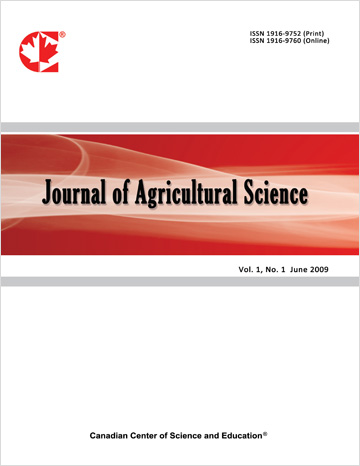Food System Factors Influencing Dietary Diversity of University Students in Nakuru County, Kenya
- Gloria Awor
- Dickson Okello
- Lydiah M. Waswa
Abstract
The increased consumption of a variety of healthy food options plays a critical role in enhancing the nutritional outcomes of university students, as well as improving the agribusiness sector. However, university students face numerous challenges within the university food system, which hinder their ability to maintain healthy eating habits. The current study identified food system factors that influence the dietary diversity of university students. The cross-sectional research design was adopted, and the multistage sampling technique was utilized to select a total of 435 undergraduate students from five universities in Nakuru County. Data was collected through face-to-face interviews using a semi-structured questionnaire. The data was analyzed using descriptive statistics and the Ordered Probit Model with STATA software. The results revealed a mean dietary diversity score (DDS) of 4.31±1.59, with 7.82% of students having a high DDS, 59.77% showing a moderate DDS, and 32.41% demonstrating a low DDS. Factors such as gender, academic workload, food expenditure, food availability, food accessibility, food processing, food prices, nutrition knowledge, food insecurity, and meal planning significantly influenced the dietary diversity of undergraduate students. The findings underscore the need for effective interventions tailored to enhance the dietary diversity of university students. Emphasis should be placed on the availability and accessibility of a variety of healthy food options within universities at an affordable price. Conversely, policies to limit the consumption of foods high in salt, sugar, and fat should be implemented. Meal plans should be promoted, and nutrition awareness among university students should be enhanced through educational programs. Therefore, the study contributes to the growing body of knowledge by identifying specific food system factors that critically influence the dietary diversity of university students. Furthermore, the findings reinforce existing research that highlights the importance of food system factors in shaping the consumption patterns of university students.
- Full Text:
 PDF
PDF
- DOI:10.5539/jas.v17n8p63
Journal Metrics
- h-index: 67
- i10-index: 839
- WJCI (2023): 0.884
- WJCI Impact Factor (2023): 0.196
Index
- AGRICOLA
- AGRIS
- BASE (Bielefeld Academic Search Engine)
- Berkeley Library
- CAB Abstracts
- ChronosHub
- CiteSeerx
- CNKI Scholar
- Copyright Clearance Center
- CrossRef
- DESY Publication Database
- DTU Library
- e-Library
- EBSCOhost
- EconPapers
- Elektronische Zeitschriftenbibliothek (EZB)
- EuroPub Database
- Excellence in Research for Australia (ERA)
- Google Scholar
- Harvard Library
- IDEAS
- iDiscover
- Jisc Library Hub Discover
- JournalTOCs
- KindCongress
- LIVIVO (ZB MED)
- LOCKSS
- Max Planck Institutes
- Mendeley
- MIAR
- Mir@bel
- NLM Catalog PubMed
- Norwegian Centre for Research Data (NSD)
- Open J-Gate
- OUCI
- PKP Open Archives Harvester
- Polska Bibliografia Naukowa
- Qualis/CAPES
- RefSeek
- RePEc
- ROAD
- ScienceOpen
- Scilit
- SCiNiTO
- Semantic Scholar
- SHERPA/RoMEO
- Southwest-German Union Catalogue
- Standard Periodical Directory
- Stanford Libraries
- SUDOC
- Swisscovery
- Technische Informationsbibliothek (TIB)
- Trove
- UCR Library
- Ulrich's
- UniCat
- Universe Digital Library
- WorldCat
- WRLC Catalog
- Zeitschriften Daten Bank (ZDB)
Contact
- Anne BrownEditorial Assistant
- jas@ccsenet.org
